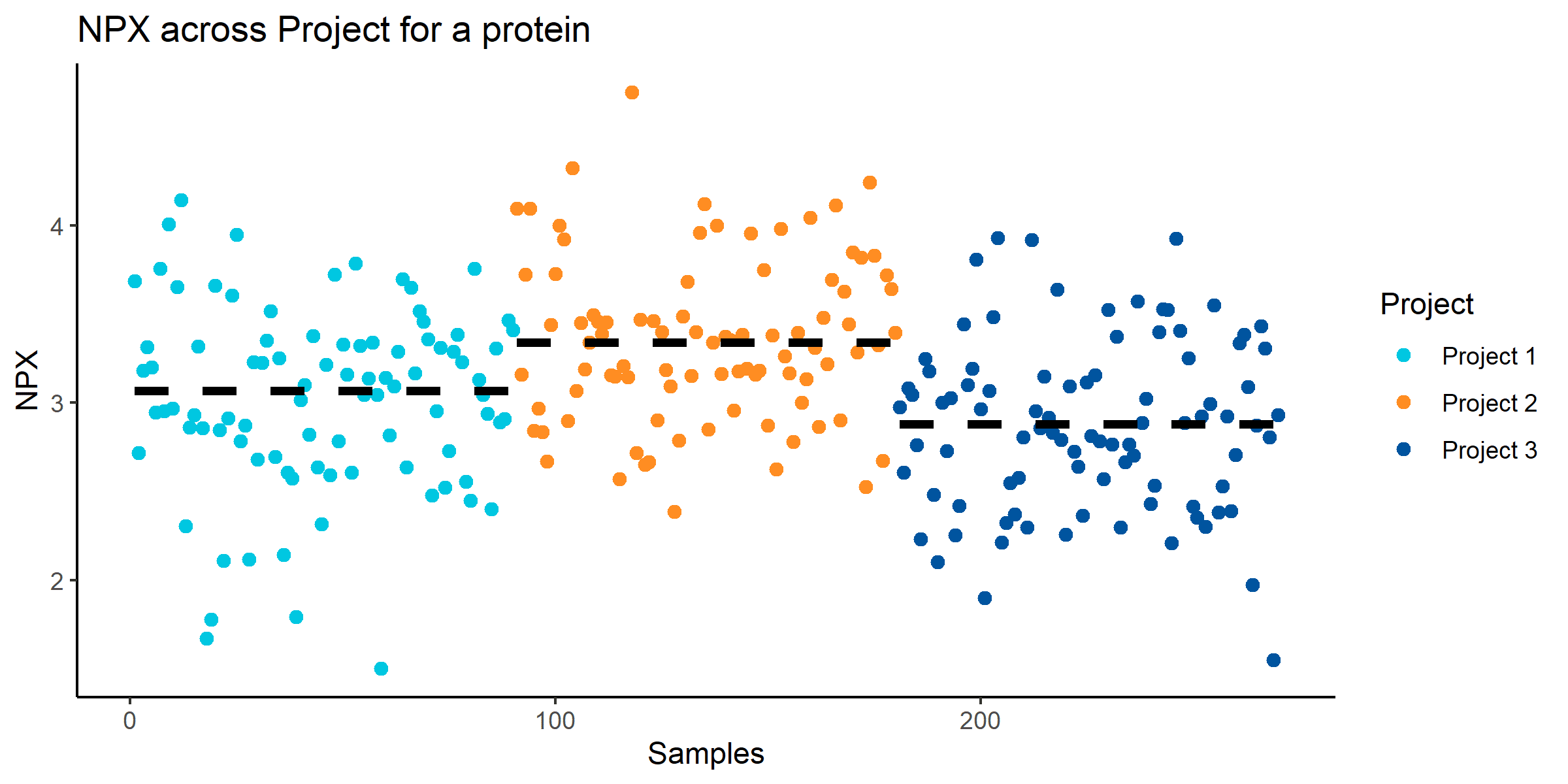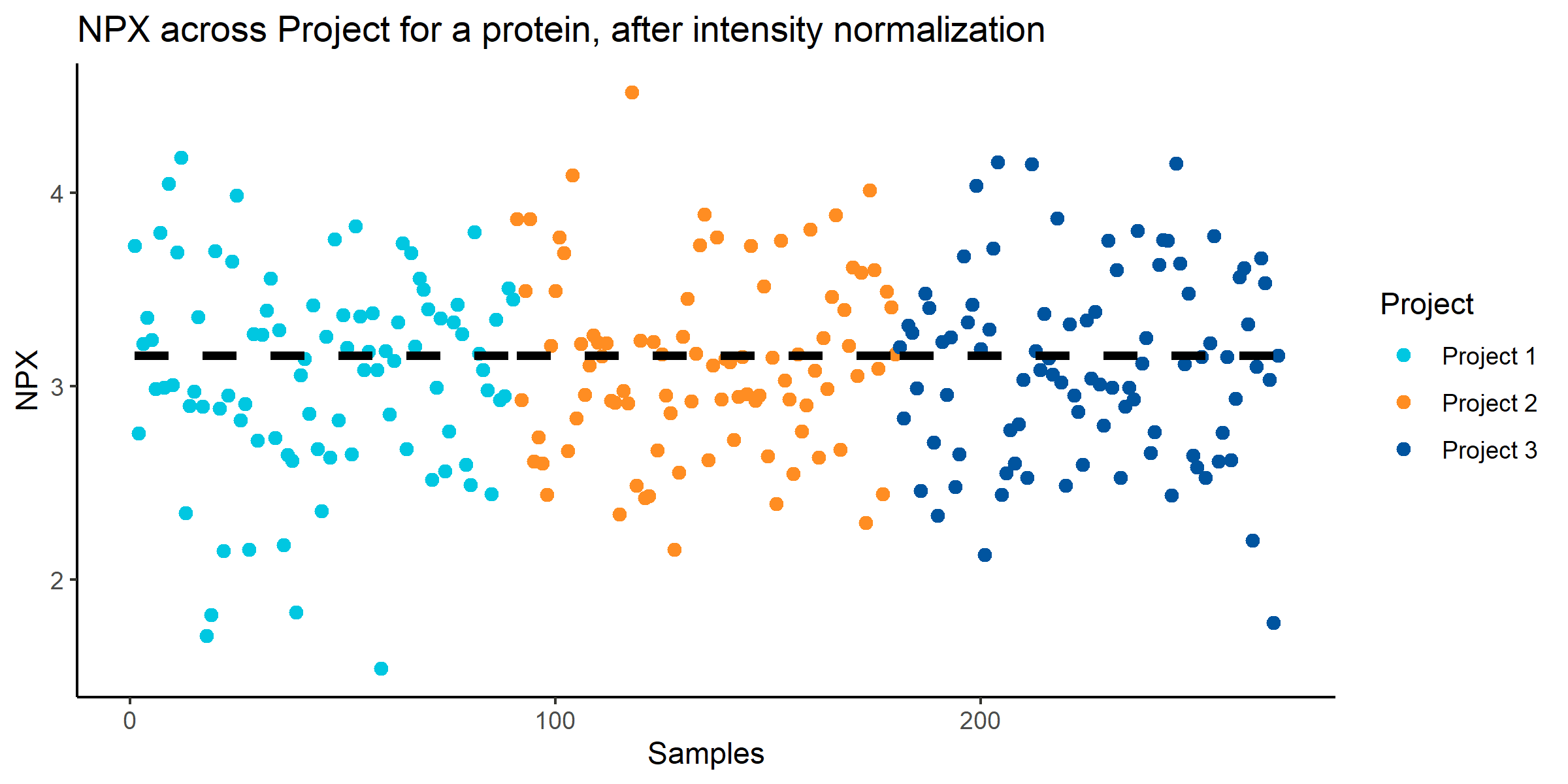To reduce technical variation between plates and studies, Olink recommends that samples are randomized, and that intensity normalization is performed before statistical analysis.
How do you normalize between plates of randomized samples?
For projects where samples are randomized, Olink recommends applying intensity normalization using the plate median as the normalization factor. The intensity normalization adjusts the data to make the median value for each assay on every plate equal across the plates. This method assumes that the actual median of each plate is very similar, which can be ensured by complete randomization of the samples. When complete randomization can be assumed, this is a robust and high performing normalization method.
For Target 96 panels, intensity normalization is performed in the following way:
- For each assay, the overall median value for all samples and plates is calculated.
- For each plate and assay, the plate-specific median value is calculated.
- For each assay, the plate-specific median is subtracted from every sample of the plate, this centralizes the median to 0.
- For each assay, the overall median value is added to every sample in the project which equals centralizing to the overall median.
For Explore products, intensity normalization is simplified and performed in the following way:
- For each plate and assay, the plate-specific median value is calculated.
- For each assay, the plate-specific median is subtracted from every sample of the plate, this centralizes the median to 0.

Figure 1. NPX across plates for an example protein before normalization

Figure 2. NPX across plates for a protein after intensity normalization for Target products. Note that for Explore products, the NPX values would be centered around 0.